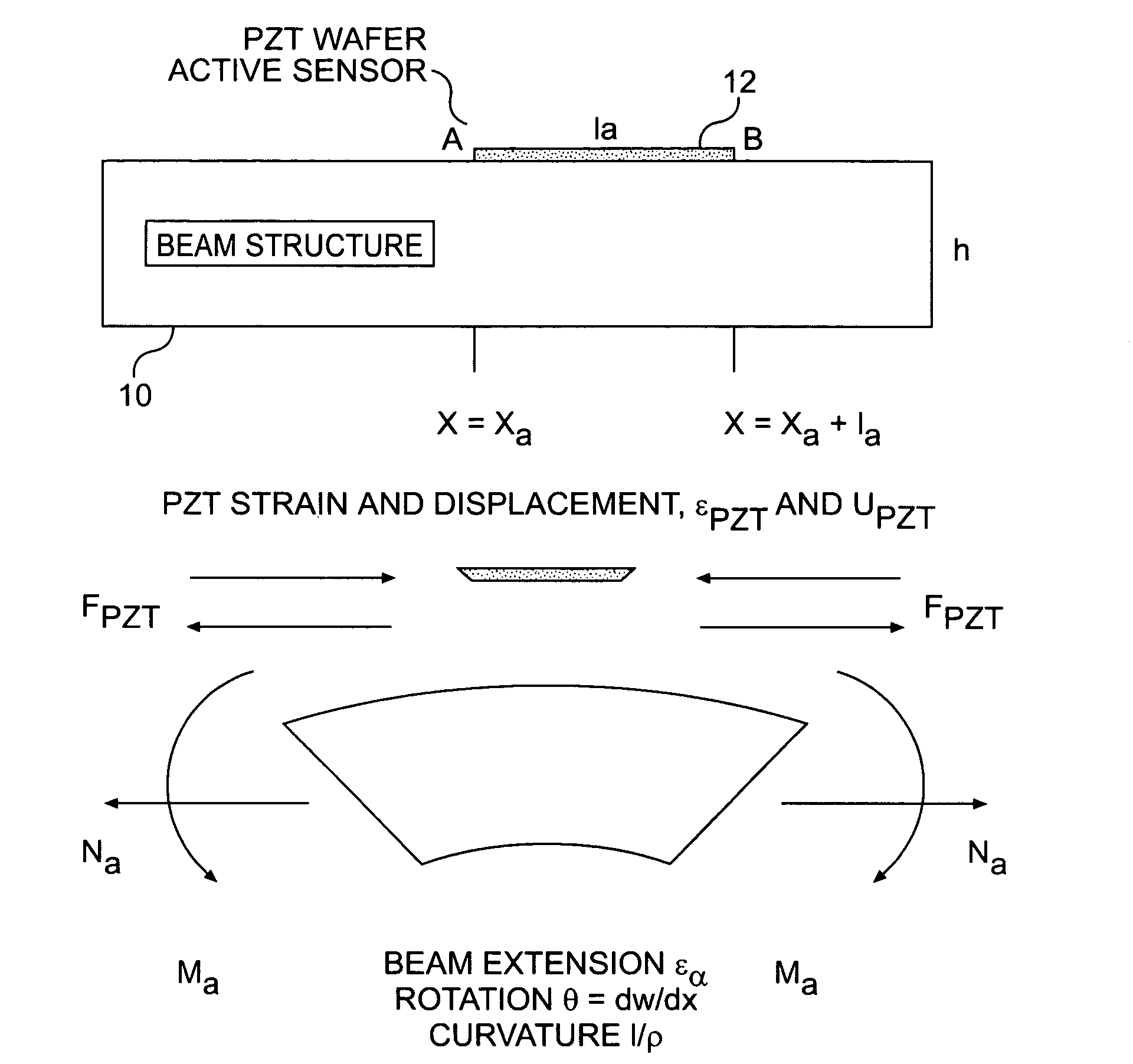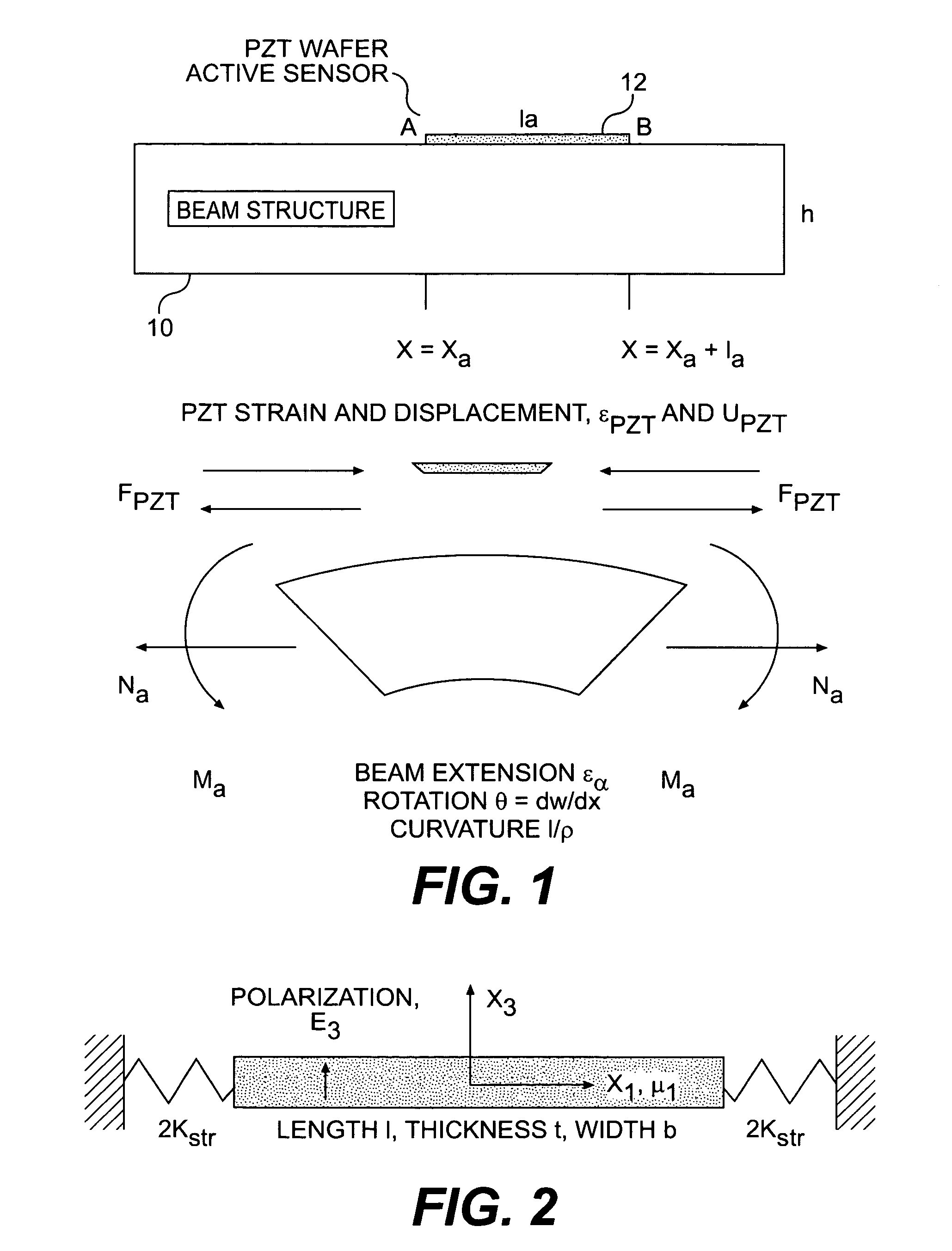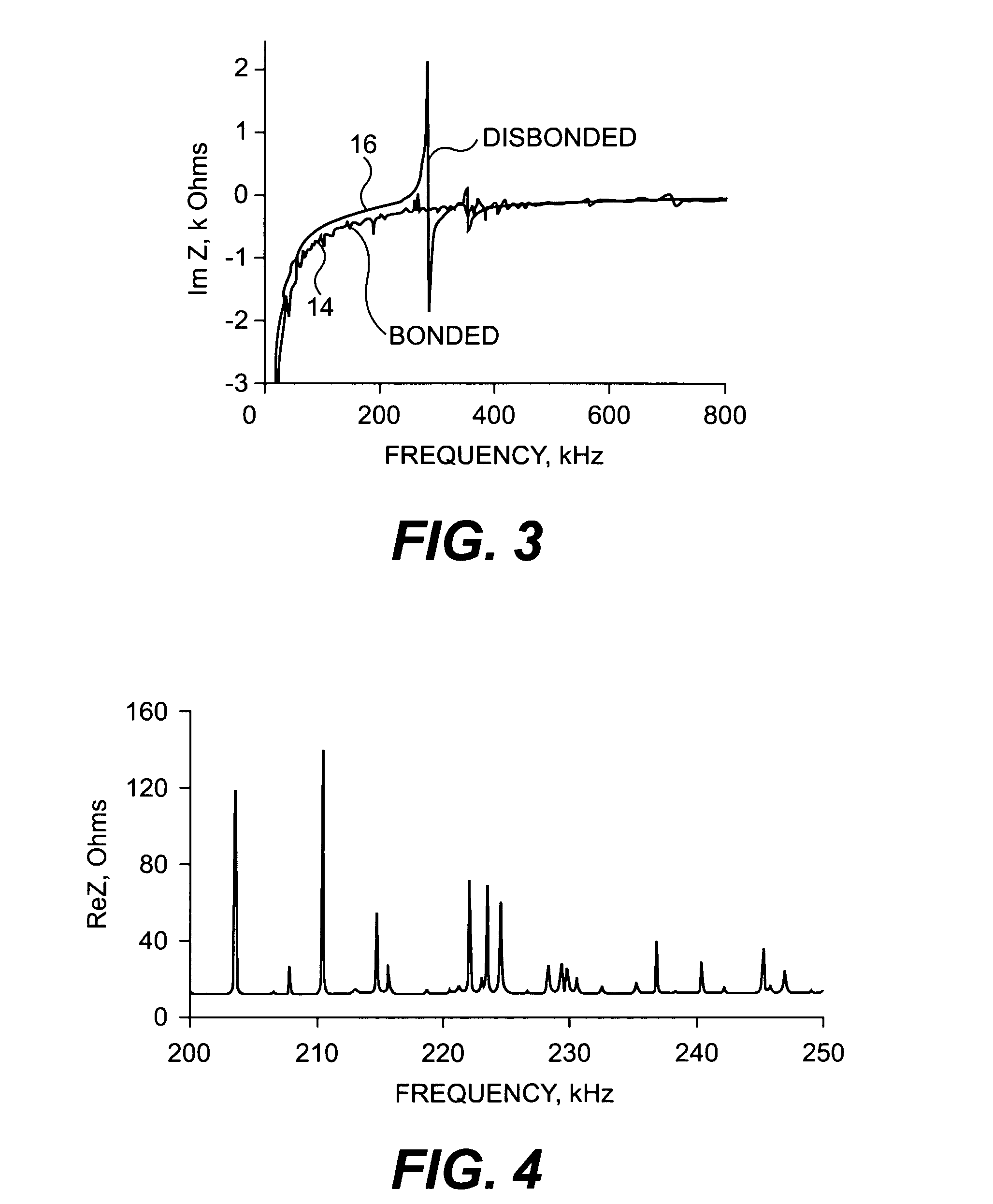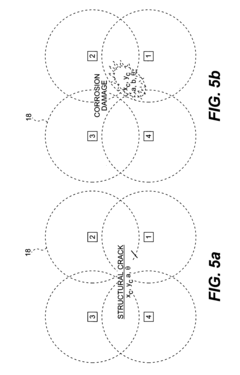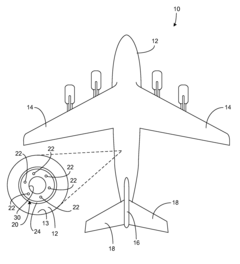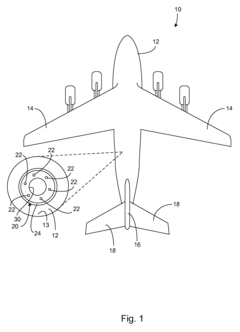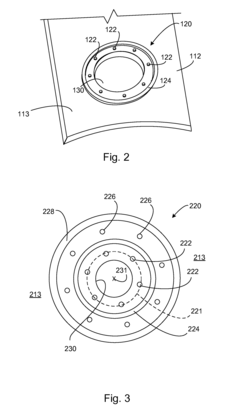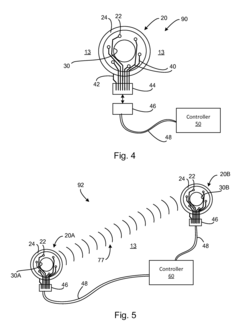Piezoelectric Sensors for Early Structural Damage Detection
JUL 17, 20259 MIN READ
Generate Your Research Report Instantly with AI Agent
Patsnap Eureka helps you evaluate technical feasibility & market potential.
Piezoelectric Sensing Background and Objectives
Piezoelectric sensing technology has emerged as a promising approach for early structural damage detection, offering significant potential in enhancing the safety and longevity of various infrastructures. The development of this technology can be traced back to the discovery of the piezoelectric effect by Jacques and Pierre Curie in 1880, which laid the foundation for its diverse applications in sensing and actuation.
Over the past few decades, piezoelectric sensors have gained increasing attention in the field of structural health monitoring due to their unique ability to convert mechanical stress into electrical signals. This characteristic makes them particularly suitable for detecting minute changes in structural integrity, potentially indicating the onset of damage long before it becomes visible or catastrophic.
The evolution of piezoelectric sensing technology has been driven by the growing need for more reliable and efficient methods of monitoring the health of critical infrastructure such as bridges, buildings, aircraft, and pipelines. As these structures age and face increasing environmental stresses, the importance of early damage detection has become paramount in preventing failures and optimizing maintenance strategies.
Recent advancements in materials science and signal processing techniques have further propelled the development of piezoelectric sensors, enabling higher sensitivity, improved durability, and more accurate damage localization capabilities. The integration of these sensors with wireless communication and data analytics has opened up new possibilities for real-time, continuous monitoring of structures, marking a significant leap forward in the field of structural health monitoring.
The primary objectives of research in piezoelectric sensing for early structural damage detection are multifaceted. Firstly, there is a focus on enhancing the sensitivity and reliability of piezoelectric sensors to detect even the slightest indications of structural damage. This involves improving sensor design, optimizing placement strategies, and developing more sophisticated signal processing algorithms.
Secondly, researchers aim to expand the applicability of piezoelectric sensing technology across a wider range of structures and environmental conditions. This includes addressing challenges such as temperature variations, electromagnetic interference, and the complex geometries of modern structures.
Another key objective is to develop more robust and cost-effective piezoelectric sensing systems that can be easily integrated into existing structures or incorporated into new constructions. This involves not only improving the sensors themselves but also developing supporting technologies for power management, data transmission, and analysis.
Furthermore, there is a growing emphasis on creating intelligent damage detection systems that can not only identify the presence of damage but also characterize its nature, severity, and potential impact on structural integrity. This requires the development of advanced data interpretation techniques, often leveraging machine learning and artificial intelligence algorithms.
Over the past few decades, piezoelectric sensors have gained increasing attention in the field of structural health monitoring due to their unique ability to convert mechanical stress into electrical signals. This characteristic makes them particularly suitable for detecting minute changes in structural integrity, potentially indicating the onset of damage long before it becomes visible or catastrophic.
The evolution of piezoelectric sensing technology has been driven by the growing need for more reliable and efficient methods of monitoring the health of critical infrastructure such as bridges, buildings, aircraft, and pipelines. As these structures age and face increasing environmental stresses, the importance of early damage detection has become paramount in preventing failures and optimizing maintenance strategies.
Recent advancements in materials science and signal processing techniques have further propelled the development of piezoelectric sensors, enabling higher sensitivity, improved durability, and more accurate damage localization capabilities. The integration of these sensors with wireless communication and data analytics has opened up new possibilities for real-time, continuous monitoring of structures, marking a significant leap forward in the field of structural health monitoring.
The primary objectives of research in piezoelectric sensing for early structural damage detection are multifaceted. Firstly, there is a focus on enhancing the sensitivity and reliability of piezoelectric sensors to detect even the slightest indications of structural damage. This involves improving sensor design, optimizing placement strategies, and developing more sophisticated signal processing algorithms.
Secondly, researchers aim to expand the applicability of piezoelectric sensing technology across a wider range of structures and environmental conditions. This includes addressing challenges such as temperature variations, electromagnetic interference, and the complex geometries of modern structures.
Another key objective is to develop more robust and cost-effective piezoelectric sensing systems that can be easily integrated into existing structures or incorporated into new constructions. This involves not only improving the sensors themselves but also developing supporting technologies for power management, data transmission, and analysis.
Furthermore, there is a growing emphasis on creating intelligent damage detection systems that can not only identify the presence of damage but also characterize its nature, severity, and potential impact on structural integrity. This requires the development of advanced data interpretation techniques, often leveraging machine learning and artificial intelligence algorithms.
Market Analysis for Structural Health Monitoring
The structural health monitoring (SHM) market has been experiencing significant growth in recent years, driven by the increasing need for early detection of structural damage in various industries. The global SHM market size was valued at USD 1.48 billion in 2020 and is projected to reach USD 3.38 billion by 2027, growing at a CAGR of 14.2% during the forecast period.
The demand for piezoelectric sensors in SHM applications is particularly strong due to their ability to provide real-time, continuous monitoring of structural integrity. These sensors offer advantages such as high sensitivity, wide frequency range, and the ability to function as both sensors and actuators. The piezoelectric sensor market for SHM is expected to grow at a CAGR of 11.7% from 2021 to 2028.
Key industries driving the adoption of piezoelectric sensors for early structural damage detection include aerospace, civil infrastructure, automotive, and energy. The aerospace sector, in particular, is a major contributor to market growth, with an increasing focus on lightweight materials and the need for continuous monitoring of critical components. The civil infrastructure segment is also showing substantial growth, driven by aging infrastructure in developed countries and rapid urbanization in emerging economies.
Geographically, North America currently holds the largest market share for SHM systems, followed by Europe and Asia-Pacific. However, the Asia-Pacific region is expected to witness the highest growth rate in the coming years, primarily due to increasing investments in infrastructure development and stringent safety regulations in countries like China and India.
The market for piezoelectric sensors in SHM applications is characterized by intense competition and rapid technological advancements. Key players in this market include PCB Piezotronics, Honeywell International, Meggitt PLC, and Brüel & Kjær. These companies are focusing on developing innovative sensor technologies and expanding their product portfolios to gain a competitive edge.
Challenges in the market include the high initial cost of implementing SHM systems and the complexity of data interpretation. However, advancements in data analytics and artificial intelligence are expected to address these challenges, further driving market growth. Additionally, the increasing adoption of Internet of Things (IoT) and cloud-based SHM solutions is creating new opportunities for market expansion.
The demand for piezoelectric sensors in SHM applications is particularly strong due to their ability to provide real-time, continuous monitoring of structural integrity. These sensors offer advantages such as high sensitivity, wide frequency range, and the ability to function as both sensors and actuators. The piezoelectric sensor market for SHM is expected to grow at a CAGR of 11.7% from 2021 to 2028.
Key industries driving the adoption of piezoelectric sensors for early structural damage detection include aerospace, civil infrastructure, automotive, and energy. The aerospace sector, in particular, is a major contributor to market growth, with an increasing focus on lightweight materials and the need for continuous monitoring of critical components. The civil infrastructure segment is also showing substantial growth, driven by aging infrastructure in developed countries and rapid urbanization in emerging economies.
Geographically, North America currently holds the largest market share for SHM systems, followed by Europe and Asia-Pacific. However, the Asia-Pacific region is expected to witness the highest growth rate in the coming years, primarily due to increasing investments in infrastructure development and stringent safety regulations in countries like China and India.
The market for piezoelectric sensors in SHM applications is characterized by intense competition and rapid technological advancements. Key players in this market include PCB Piezotronics, Honeywell International, Meggitt PLC, and Brüel & Kjær. These companies are focusing on developing innovative sensor technologies and expanding their product portfolios to gain a competitive edge.
Challenges in the market include the high initial cost of implementing SHM systems and the complexity of data interpretation. However, advancements in data analytics and artificial intelligence are expected to address these challenges, further driving market growth. Additionally, the increasing adoption of Internet of Things (IoT) and cloud-based SHM solutions is creating new opportunities for market expansion.
Current Challenges in Early Damage Detection
Early structural damage detection using piezoelectric sensors faces several significant challenges that hinder widespread adoption and effectiveness. One of the primary obstacles is the sensitivity and reliability of sensor systems in complex, real-world environments. Structures are often subjected to varying loads, temperature fluctuations, and environmental factors that can introduce noise and false positives in sensor readings. Distinguishing between actual damage signals and these environmental effects remains a critical challenge.
Another major hurdle is the integration and placement of sensors within structures. Optimal sensor positioning is crucial for accurate damage detection, but determining the ideal locations can be complex, especially for large-scale structures. Additionally, the installation process must be non-invasive to maintain structural integrity, which can limit sensor placement options and potentially reduce detection capabilities.
Data interpretation and analysis present further challenges. The vast amount of data generated by piezoelectric sensor networks requires sophisticated algorithms and processing techniques to extract meaningful information. Developing robust damage identification algorithms that can handle various types of structures and damage scenarios is an ongoing area of research. Moreover, the ability to accurately localize and characterize damage based on sensor data remains a significant technical challenge.
Scalability and cost-effectiveness are also important considerations. While piezoelectric sensors have shown promise in laboratory settings and small-scale applications, scaling up to large, complex structures like bridges or high-rise buildings presents logistical and economic challenges. The cost of implementing comprehensive sensor networks across entire structures can be prohibitive, necessitating the development of more cost-effective solutions.
Long-term reliability and durability of piezoelectric sensors in harsh environments is another area of concern. Sensors must maintain their performance over extended periods without degradation or failure, which can be challenging in structures exposed to extreme weather conditions, corrosive environments, or high-stress situations.
Lastly, the development of standardized methodologies and guidelines for implementing piezoelectric sensor-based damage detection systems is lacking. This absence of standardization makes it difficult for industry professionals to adopt and trust these technologies, slowing down their integration into mainstream structural health monitoring practices.
Addressing these challenges requires interdisciplinary collaboration between structural engineers, materials scientists, data analysts, and sensor technology experts. Advances in materials science, signal processing, and artificial intelligence will be crucial in overcoming these obstacles and realizing the full potential of piezoelectric sensors for early structural damage detection.
Another major hurdle is the integration and placement of sensors within structures. Optimal sensor positioning is crucial for accurate damage detection, but determining the ideal locations can be complex, especially for large-scale structures. Additionally, the installation process must be non-invasive to maintain structural integrity, which can limit sensor placement options and potentially reduce detection capabilities.
Data interpretation and analysis present further challenges. The vast amount of data generated by piezoelectric sensor networks requires sophisticated algorithms and processing techniques to extract meaningful information. Developing robust damage identification algorithms that can handle various types of structures and damage scenarios is an ongoing area of research. Moreover, the ability to accurately localize and characterize damage based on sensor data remains a significant technical challenge.
Scalability and cost-effectiveness are also important considerations. While piezoelectric sensors have shown promise in laboratory settings and small-scale applications, scaling up to large, complex structures like bridges or high-rise buildings presents logistical and economic challenges. The cost of implementing comprehensive sensor networks across entire structures can be prohibitive, necessitating the development of more cost-effective solutions.
Long-term reliability and durability of piezoelectric sensors in harsh environments is another area of concern. Sensors must maintain their performance over extended periods without degradation or failure, which can be challenging in structures exposed to extreme weather conditions, corrosive environments, or high-stress situations.
Lastly, the development of standardized methodologies and guidelines for implementing piezoelectric sensor-based damage detection systems is lacking. This absence of standardization makes it difficult for industry professionals to adopt and trust these technologies, slowing down their integration into mainstream structural health monitoring practices.
Addressing these challenges requires interdisciplinary collaboration between structural engineers, materials scientists, data analysts, and sensor technology experts. Advances in materials science, signal processing, and artificial intelligence will be crucial in overcoming these obstacles and realizing the full potential of piezoelectric sensors for early structural damage detection.
Existing Piezoelectric Sensing Solutions
01 Early detection of structural damage
Piezoelectric sensors can be used for early detection of structural damage in various applications. These sensors can detect minute changes in pressure or vibration, allowing for the identification of potential issues before they become critical. This technology can be applied in buildings, bridges, and other infrastructure to enhance safety and maintenance practices.- Piezoelectric sensors for structural health monitoring: Piezoelectric sensors are utilized for early detection of structural damage or defects in various applications such as buildings, bridges, and aerospace structures. These sensors can detect minute changes in vibration patterns or stress distributions, allowing for timely maintenance and prevention of catastrophic failures.
- Early detection of physiological changes using piezoelectric sensors: Piezoelectric sensors are employed in medical devices for early detection of physiological changes. These sensors can monitor vital signs, detect abnormal heart rhythms, or identify respiratory issues, enabling prompt medical intervention and improved patient outcomes.
- Piezoelectric sensors in automotive safety systems: Automotive industry utilizes piezoelectric sensors for early detection of potential collisions or vehicle malfunctions. These sensors can detect changes in pressure, acceleration, or vibration, triggering safety systems such as airbags or emergency braking mechanisms to prevent accidents.
- Environmental monitoring using piezoelectric sensors: Piezoelectric sensors are employed in environmental monitoring systems for early detection of natural disasters or pollution events. These sensors can detect seismic activity, changes in air or water quality, or variations in atmospheric pressure, enabling timely warnings and response measures.
- Piezoelectric sensors in industrial process control: Industrial applications utilize piezoelectric sensors for early detection of equipment failures or process deviations. These sensors can monitor vibration levels, pressure changes, or material flow rates, allowing for predictive maintenance and optimization of manufacturing processes.
02 Wearable health monitoring devices
Piezoelectric sensors are being integrated into wearable devices for early detection of health issues. These sensors can monitor vital signs, detect abnormal movements, and provide real-time data for medical professionals. This technology enables continuous health monitoring and early intervention for various conditions.Expand Specific Solutions03 Vehicle safety and maintenance
Piezoelectric sensors are utilized in vehicles for early detection of potential issues and enhanced safety features. These sensors can monitor tire pressure, detect impacts, and assess vehicle performance. By providing early warnings, they contribute to improved vehicle maintenance and accident prevention.Expand Specific Solutions04 Environmental monitoring and disaster prevention
Piezoelectric sensors play a crucial role in early detection of environmental changes and potential natural disasters. They can be used to monitor seismic activity, detect changes in air or water quality, and provide early warnings for events such as landslides or floods. This application helps in disaster prevention and mitigation strategies.Expand Specific Solutions05 Industrial process monitoring
Piezoelectric sensors are employed in industrial settings for early detection of equipment failures and process anomalies. These sensors can monitor vibrations, pressure changes, and other parameters critical to manufacturing processes. By detecting issues early, they help prevent production downtime and improve overall efficiency.Expand Specific Solutions
Key Players in Structural Monitoring Industry
The research on piezoelectric sensors for early structural damage detection is in a growth phase, with increasing market size and technological advancements. The global market for structural health monitoring systems, including piezoelectric sensors, is projected to expand significantly in the coming years. Technologically, while the concept is well-established, ongoing research focuses on improving sensitivity, reliability, and integration capabilities. Companies like Acellent Technologies and Kyocera Corp. are at the forefront, developing innovative sensor technologies. Academic institutions such as Carnegie Mellon University and Korea Advanced Institute of Science & Technology are contributing to fundamental research, while industry players like Boeing and Airbus Defence & Space are exploring practical applications in aerospace and defense sectors.
Huazhong University of Science & Technology
Technical Solution: Huazhong University of Science & Technology has made significant contributions to the field of piezoelectric sensors for structural health monitoring. Their research focuses on developing high-sensitivity piezoelectric materials and innovative sensor designs. The university has pioneered the use of piezoelectric paint sensors, which can be easily applied to large areas and complex geometries[13]. They have also developed advanced signal processing techniques, including wavelet transform and time reversal methods, to improve damage detection accuracy in noisy environments[14]. HUST researchers have explored the integration of piezoelectric sensors with other sensing technologies, such as fiber optic sensors, to create hybrid monitoring systems with enhanced capabilities[15]. The university has collaborated with industry partners to apply their technologies in civil infrastructure, aerospace, and energy sectors.
Strengths: Innovative sensor designs, advanced signal processing techniques, and strong industry collaborations. Weaknesses: May face challenges in scaling up production and commercialization of research prototypes.
The Boeing Co.
Technical Solution: Boeing has invested heavily in piezoelectric sensor technology for structural health monitoring of aircraft. Their approach combines distributed piezoelectric sensors with advanced data analytics and machine learning algorithms. Boeing's system uses a combination of active and passive sensing techniques, where sensors can both generate and receive acoustic waves to detect structural changes[4]. The company has developed proprietary software that can analyze sensor data in real-time, providing immediate alerts for potential structural issues. Boeing has also explored the use of energy harvesting techniques to power these sensor networks, reducing the need for external power sources[5]. Their research has focused on optimizing sensor placement and signal processing to maximize detection accuracy while minimizing false alarms[6].
Strengths: Comprehensive integration with aircraft systems, extensive real-world testing, and advanced data analytics capabilities. Weaknesses: Solutions may be highly specialized for aerospace applications, potentially limiting broader market applicability.
Core Innovations in Damage Detection
In-situ structural health monitoring, diagnostics and prognostics system utilizing thin piezoelectric sensors
PatentInactiveUS7024315B2
Innovation
- Embedding thin piezoelectric ceramic sensors on structures to detect damage features by generating and receiving elastic waves, analyzing changes in electromechanical impedance spectra to identify incipient damage and corrosion, using active and passive sensing methods with sensor arrays for precise location and characterization of defects.
Piezoelectric sensor configuration for detecting damage in a structure
PatentActiveUS9470660B2
Innovation
- A system and method utilizing a circular arrangement of piezoelectric sensing elements, including an annular-shaped element, to generate and sense waves through structures, allowing for comprehensive damage detection without disassembly, with a controller to switch between modes for enhanced detection capabilities.
Environmental Factors Affecting Sensors
Environmental factors play a crucial role in the performance and reliability of piezoelectric sensors used for early structural damage detection. These sensors are often exposed to various environmental conditions that can significantly impact their functionality and accuracy.
Temperature fluctuations are one of the primary environmental factors affecting piezoelectric sensors. Extreme temperatures can alter the material properties of the piezoelectric elements, leading to changes in their sensitivity and output characteristics. High temperatures may cause thermal expansion, potentially resulting in mechanical stress and sensor deformation. Conversely, low temperatures can lead to contraction and reduced sensor flexibility.
Humidity is another critical factor that can influence sensor performance. Excessive moisture can lead to corrosion of sensor components, particularly in metal-based piezoelectric materials. This corrosion can degrade sensor sensitivity and longevity. Additionally, humidity can affect the electrical properties of the sensor, potentially causing signal drift or interference.
Vibration and mechanical stress from external sources can impact the accuracy of piezoelectric sensors. Continuous exposure to vibrations may lead to fatigue in the sensor materials, potentially causing premature failure or reduced sensitivity over time. These external forces can also introduce noise into the sensor readings, making it challenging to distinguish between actual structural damage and environmental interference.
Electromagnetic interference (EMI) is a significant concern for piezoelectric sensors in certain environments. Industrial settings with high electromagnetic fields can induce unwanted signals in the sensor circuitry, leading to false readings or reduced sensitivity. Proper shielding and signal processing techniques are essential to mitigate EMI effects.
Chemical exposure is another environmental factor that can affect sensor performance. Certain chemicals may react with the piezoelectric materials or sensor components, leading to degradation or altered sensor characteristics. This is particularly relevant in industrial or marine environments where sensors may be exposed to corrosive substances or pollutants.
Radiation exposure, while less common, can be a critical factor in specific applications such as nuclear power plants or space-based structures. High levels of radiation can cause material degradation and affect the electronic components of the sensors, potentially leading to inaccurate readings or sensor failure.
To address these environmental challenges, researchers and engineers must develop robust sensor designs and implement appropriate protective measures. This may include using specialized coatings to protect against moisture and chemical exposure, implementing temperature compensation techniques, and designing sensors with enhanced resistance to mechanical stress and vibration. Additionally, advanced signal processing algorithms can help filter out environmental noise and improve the accuracy of damage detection in varying conditions.
Temperature fluctuations are one of the primary environmental factors affecting piezoelectric sensors. Extreme temperatures can alter the material properties of the piezoelectric elements, leading to changes in their sensitivity and output characteristics. High temperatures may cause thermal expansion, potentially resulting in mechanical stress and sensor deformation. Conversely, low temperatures can lead to contraction and reduced sensor flexibility.
Humidity is another critical factor that can influence sensor performance. Excessive moisture can lead to corrosion of sensor components, particularly in metal-based piezoelectric materials. This corrosion can degrade sensor sensitivity and longevity. Additionally, humidity can affect the electrical properties of the sensor, potentially causing signal drift or interference.
Vibration and mechanical stress from external sources can impact the accuracy of piezoelectric sensors. Continuous exposure to vibrations may lead to fatigue in the sensor materials, potentially causing premature failure or reduced sensitivity over time. These external forces can also introduce noise into the sensor readings, making it challenging to distinguish between actual structural damage and environmental interference.
Electromagnetic interference (EMI) is a significant concern for piezoelectric sensors in certain environments. Industrial settings with high electromagnetic fields can induce unwanted signals in the sensor circuitry, leading to false readings or reduced sensitivity. Proper shielding and signal processing techniques are essential to mitigate EMI effects.
Chemical exposure is another environmental factor that can affect sensor performance. Certain chemicals may react with the piezoelectric materials or sensor components, leading to degradation or altered sensor characteristics. This is particularly relevant in industrial or marine environments where sensors may be exposed to corrosive substances or pollutants.
Radiation exposure, while less common, can be a critical factor in specific applications such as nuclear power plants or space-based structures. High levels of radiation can cause material degradation and affect the electronic components of the sensors, potentially leading to inaccurate readings or sensor failure.
To address these environmental challenges, researchers and engineers must develop robust sensor designs and implement appropriate protective measures. This may include using specialized coatings to protect against moisture and chemical exposure, implementing temperature compensation techniques, and designing sensors with enhanced resistance to mechanical stress and vibration. Additionally, advanced signal processing algorithms can help filter out environmental noise and improve the accuracy of damage detection in varying conditions.
Data Processing and AI Integration
Data processing and AI integration play a crucial role in enhancing the effectiveness of piezoelectric sensors for early structural damage detection. The raw data collected from these sensors often contains noise and requires sophisticated processing techniques to extract meaningful information. Signal processing methods, such as filtering, feature extraction, and pattern recognition, are employed to clean and analyze the sensor data.
Advanced signal processing algorithms, including wavelet transforms and time-frequency analysis, are particularly useful in identifying subtle changes in structural integrity. These techniques allow for the detection of small variations in the sensor output that may indicate the onset of damage. Furthermore, machine learning algorithms have proven to be highly effective in interpreting the processed data and identifying patterns associated with structural deterioration.
Artificial intelligence, specifically deep learning models, has shown remarkable potential in improving the accuracy and reliability of damage detection systems. Convolutional Neural Networks (CNNs) and Recurrent Neural Networks (RNNs) are being increasingly utilized to analyze complex sensor data and detect anomalies that may be indicative of structural damage. These AI models can be trained on large datasets of both healthy and damaged structural responses, enabling them to recognize subtle signs of deterioration that might be missed by traditional analysis methods.
The integration of AI with piezoelectric sensor systems also facilitates real-time monitoring and predictive maintenance. By continuously analyzing sensor data streams, AI algorithms can provide instant alerts when potential damage is detected and even predict future structural issues based on current trends. This proactive approach to structural health monitoring can significantly reduce maintenance costs and prevent catastrophic failures.
Moreover, the combination of multiple sensor types and data fusion techniques further enhances the capabilities of these systems. By integrating data from piezoelectric sensors with other sensing modalities, such as accelerometers or strain gauges, a more comprehensive picture of the structure's health can be obtained. AI algorithms excel at synthesizing these diverse data sources to provide a holistic assessment of structural integrity.
As the field continues to evolve, edge computing is emerging as a promising approach for processing sensor data. By performing initial data analysis at the sensor level, edge computing can reduce latency and bandwidth requirements, enabling more efficient and responsive damage detection systems. This decentralized approach also enhances the scalability of structural health monitoring solutions, making them suitable for large-scale infrastructure projects.
Advanced signal processing algorithms, including wavelet transforms and time-frequency analysis, are particularly useful in identifying subtle changes in structural integrity. These techniques allow for the detection of small variations in the sensor output that may indicate the onset of damage. Furthermore, machine learning algorithms have proven to be highly effective in interpreting the processed data and identifying patterns associated with structural deterioration.
Artificial intelligence, specifically deep learning models, has shown remarkable potential in improving the accuracy and reliability of damage detection systems. Convolutional Neural Networks (CNNs) and Recurrent Neural Networks (RNNs) are being increasingly utilized to analyze complex sensor data and detect anomalies that may be indicative of structural damage. These AI models can be trained on large datasets of both healthy and damaged structural responses, enabling them to recognize subtle signs of deterioration that might be missed by traditional analysis methods.
The integration of AI with piezoelectric sensor systems also facilitates real-time monitoring and predictive maintenance. By continuously analyzing sensor data streams, AI algorithms can provide instant alerts when potential damage is detected and even predict future structural issues based on current trends. This proactive approach to structural health monitoring can significantly reduce maintenance costs and prevent catastrophic failures.
Moreover, the combination of multiple sensor types and data fusion techniques further enhances the capabilities of these systems. By integrating data from piezoelectric sensors with other sensing modalities, such as accelerometers or strain gauges, a more comprehensive picture of the structure's health can be obtained. AI algorithms excel at synthesizing these diverse data sources to provide a holistic assessment of structural integrity.
As the field continues to evolve, edge computing is emerging as a promising approach for processing sensor data. By performing initial data analysis at the sensor level, edge computing can reduce latency and bandwidth requirements, enabling more efficient and responsive damage detection systems. This decentralized approach also enhances the scalability of structural health monitoring solutions, making them suitable for large-scale infrastructure projects.
Unlock deeper insights with Patsnap Eureka Quick Research — get a full tech report to explore trends and direct your research. Try now!
Generate Your Research Report Instantly with AI Agent
Supercharge your innovation with Patsnap Eureka AI Agent Platform!
